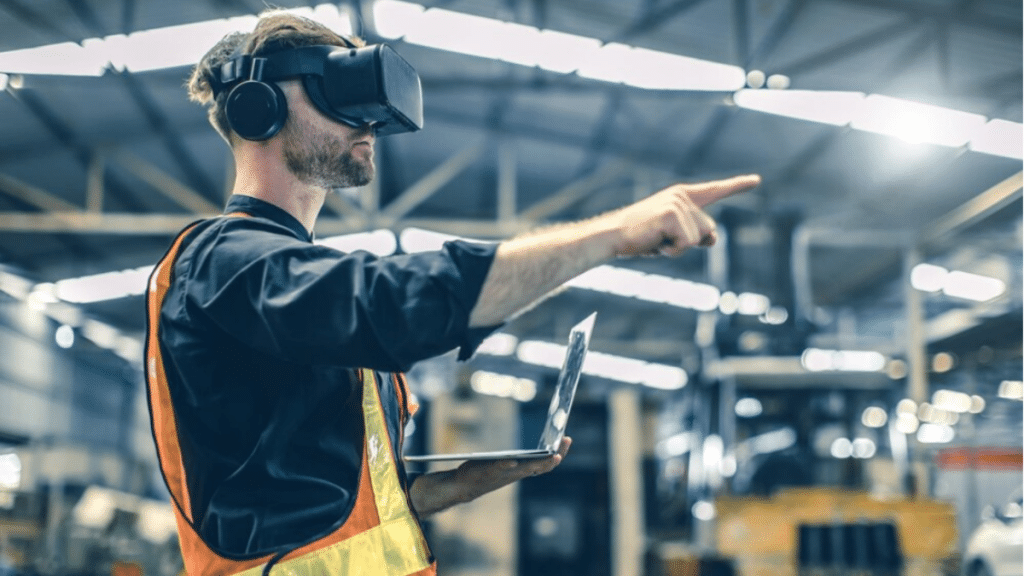As manufacturing environments become increasingly complex and fast-paced, ensuring worker safety remains a paramount concern. Traditional safety training methods, while foundational, often fall short in preparing employees for the dynamic challenges of modern production lines. Enter Virtual Reality (VR): a transformative technology that’s redefining safety protocols and training methodologies in the manufacturing sector.
For a deeper dive into how VR is revolutionizing manufacturing processes, explore this insightful article on VR manufacturing.
The Evolution of Safety Training
Conventional safety training typically involves classroom sessions, manuals, and occasional hands-on demonstrations. While these methods provide essential knowledge, they may not effectively simulate real-world scenarios, leaving workers underprepared for unexpected situations.
VR addresses this gap by immersing trainees in realistic, interactive environments where they can practice responses to potential hazards without real-world consequences. This experiential learning approach enhances retention and equips workers with the confidence to handle emergencies adeptly.
Quantifiable Benefits of VR in Manufacturing Safety
The integration of VR into safety training programs has yielded impressive results:
- Significant Reduction in Workplace Injuries: Companies implementing VR training have observed a 70% decrease in workplace injuries compared to those relying solely on traditional methods.
- Enhanced Knowledge Retention: VR-based learning boosts knowledge retention rates to 80%, a substantial improvement over the 20% retention observed with conventional training.
- Accelerated Skill Acquisition: Employees trained via VR acquire skills 45% faster than those trained through traditional means, expediting the onboarding process and reducing downtime.
- Improved Performance: VR training has been shown to enhance worker performance by up to 70%, leading to increased productivity and operational efficiency.
Real-World Applications and Success Stories
Leading manufacturers have embraced VR to bolster safety and efficiency:
- Ford Motor Company: By integrating VR into their safety training, Ford achieved a 70% reduction in production line injuries.
- Global Manufacturers: Companies worldwide are leveraging VR for facility layout planning, allowing them to simulate and optimize workflows, ensuring ergonomic safety and minimizing potential hazards before physical implementation.
Beyond Training: VR’s Role in Proactive Safety Management
VR’s utility extends beyond training sessions:
- Hazard Identification: By simulating various operational scenarios, VR helps in identifying potential risks, enabling preemptive measures.
- Emergency Preparedness: Employees can rehearse emergency protocols in a controlled environment, ensuring readiness without exposing them to actual danger.
- Continuous Improvement: VR simulations can be updated regularly to reflect changes in equipment, procedures, or regulations, ensuring that training remains current and effective.
Implementing VR: Considerations and Best Practices
For manufacturers contemplating the adoption of VR for safety training:
- Assess Specific Needs: Identify areas where VR can have the most impact, such as high-risk operations or complex machinery handling.
- Collaborate with Experts: Partner with VR developers experienced in industrial applications to create tailored training modules.
- Pilot Programs: Start with small-scale implementations to evaluate effectiveness before a full-scale rollout.
- Integrate with Existing Systems: Ensure that VR training complements current safety protocols and is integrated into the broader safety management system.
Conclusion
Virtual Reality is not just a technological advancement; it’s a paradigm shift in ensuring workplace safety in manufacturing. By providing immersive, realistic training experiences, VR empowers workers with the skills and confidence to navigate complex environments safely. As the industry continues to evolve, embracing VR for safety training is not just beneficial—it’s imperative.
